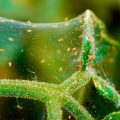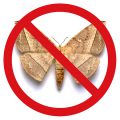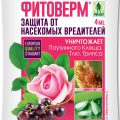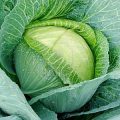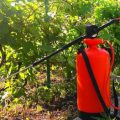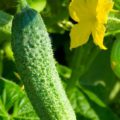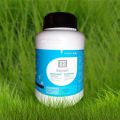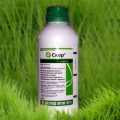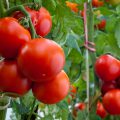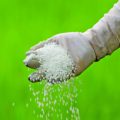What is fungicidal agents
Fungicides for plants - one of the groups of drugs on plant diseases. Each group has its own characteristics, mechanism of action and indications for use. Among gardeners fungicidal agents widely used for the treatment of plants, as they are sufficiently effective in the prophylaxis and treatment of various fungal infections in an overwhelming number of crop. They are used for both garden, and for indoor plants (pot plants).
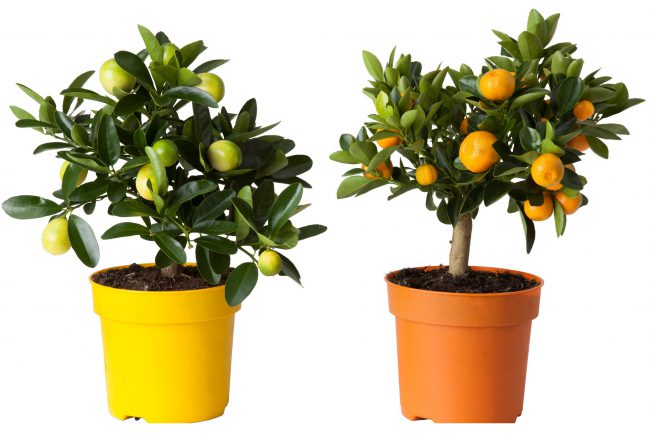
Important! Besides, that the fungicidal provide protectionfrom the fungus, they have a detrimental effect on some diseases of a different nature, which can be considered their useful side effect.
How they work
Fungicides for plants can be divided on the basis of the impact on 2 groups:
- contact, which are not absorbed by the plant, but only its surface coated with superfine plyonochku, having protective properties. This film not only prevents the penetration of the infectious agent in plant tissue, she is also capable of destroying an existing pathogen in a fairly short period of time.
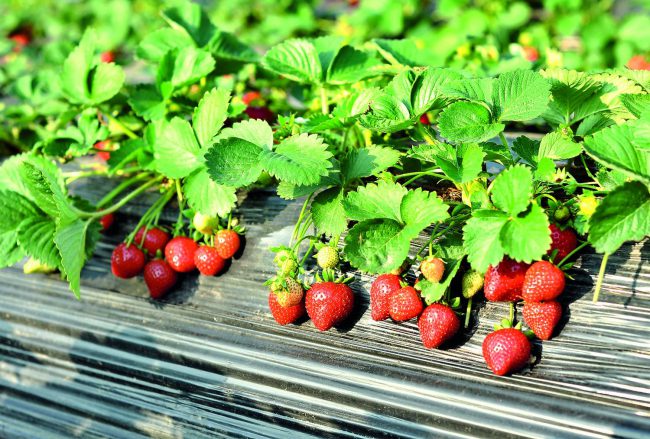
- Systemic fungicides - are absorbed by the plant and help it to beat not only the outside invasion, but also the, which is struck from within tissue. These funds have another advantage - they do not wash away the rain and the wind does not blow away.
It is interesting! Exist special funds for processing garden soil from funguss infectious agents, able to maintain the viability of in the land. Such fungicidenye drugs pour as a powder directly in the ground during the period her diggingI or making an aqueous solution of the and make into the ground during irrigation. some drugs apply for processing before planting the tubers and after purchase The material of the seedbut. But the most common fungicide groupGOVERNMENTAL funds applied for apryskivany in the period of intensive growth green parts of plants.
Both groups of drugs work in the following way:
- Complicates the process of respiration of the fungus.
- Effect on cell nuclei fungus, not allowing them to share (more typically for systemic means).
- Have a stimulating effect on the plant, catalysts become self generating plant substances, helping to overcome the fungus.
- Facilities, applied topically, help in the rejection of plant tissues, affected by fungus, as the cause of necrotic changes. Thus virtually eliminated repeated invasion of healthy tissues spores after treatment.
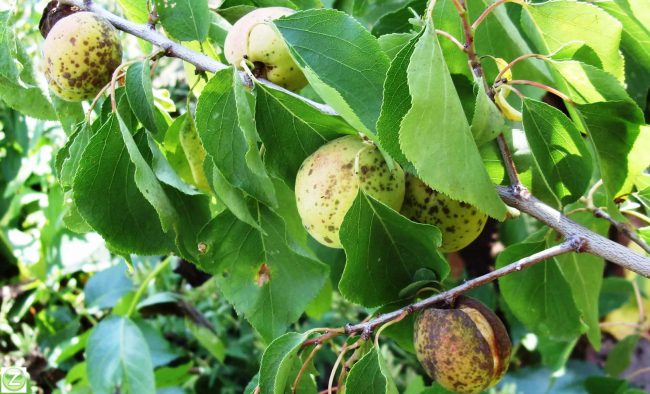
- Cleave and eliminate toxins, formed in the plants and could lead to a weakening of the add immunity.
- Prevent the formation of ergosterol in fungal cells, thereby causing his death.
- Stop the processes of nucleic acid synthesis fungal cells, destroying it.
- Inhibits energy-exchange processes in the cells of the infectious agent.
As far as biological fungicides, the fungal cells are affected as follows::
- Once inside, biological fungicides for plants have a stimulating effect on the processes of production of specific substances, actively opposing fungus.
- Have competing effects, fighting for "a place under the sun" with the infectious agent, and defeat him.
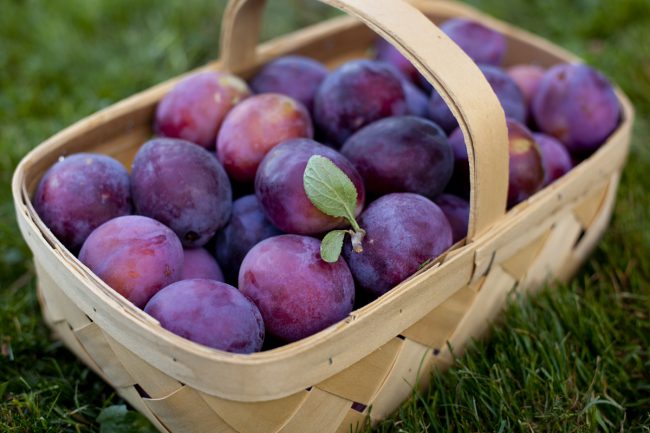
It is interesting! any facilities, employed person for getting rid of various plant species from any diseases andwhether insects-pests, call pesticidewhy. A Fungitsidnye drugs refer to one of the varieties pesticides. They are so named, based on the Latin word: fungus - fungusOK and caedo - unichtozhat.
Examples of fungicidal preparations
Preparations of a number of fungicides can be divided depending on their composition, and the ability to penetrate into the plant tissue on chemical and biological.
Biological agents contained in the composition of certain bacterial cultures, they can also consist of a culture of non-pathogenic fungi or contain natural components of certain plant, that can have a strong antifungal effect. organic type fungicides are fairly simple to use, they also have low toxicity to animals and insects, and can be used in combination with other herbicides. but, the effect of the application of this group of drugs has a relatively short period of time - a month or even just a few days. I.e, processing plants have to often re. preparation is used quite frequently among this group of tools called fitosporin M (one of the top sellers). You can buy it at a relatively low price in almost any store for gardeners.
Important! These natural substances do not pose a risk to human.
the variety drugs are extremely popular among truckers and simply gardeners gardeners.
Important! Fungitsidы available for sale at various forms - tablets, liquids (concentrates and suspension), powders and granules. each of these funds are always instruction manual, and its brand page must beozhayshim way follow - how in preparation of the solution, and when sprayingand powderovogo means.
- chemical (also referred to as inorganic antifungal preparations) They are made of a variety of chemicals, which are characterized by clearly marked fungicidal effect. But to use them best to start the growing season, and ideally - before the leaves. And if on the fruit plants have appeared flower, drugs of this type should be replaced by a less "hard".
Such tools are divided into:
- Copper-bearing (A striking example - extra Medyan);
- iron (We all know vitriol);
- sulfa (Tiovit Jet, as well as "old-fashioned" colloidal sulfur);
- and drugs, compounds containing other chemical elements, which are characterized by fungicidal effect.
note! Effectivnost utilization entsecond type fungicideGOVERNMENTAL funds more longtermand on strong, but, drugs this group are able inflict damage and therefore plants, and even a man and animals. Among other things,, they on a long time pollute Location on ground. Keep these drugs in easily accessible places categorically not withexamines in order to avoid poisoning toxic substances home pets and children.
- Commonly used chemical agents of organic origin. List of organic fungicides: morpholines (preparation Convertible Duo), carbamates (among them Tattu, CONSENT), dithiocarbamate drugs (eg, popular Acrobat or Bogatyr), as well as means imidazolovogo series (mirage) and others.
Important! Fungitsidnoe trainact this subgroup drugs It will be more expressed only in freshtheir, just Preparation of solutions, by this reason use them must be directly after cooking.
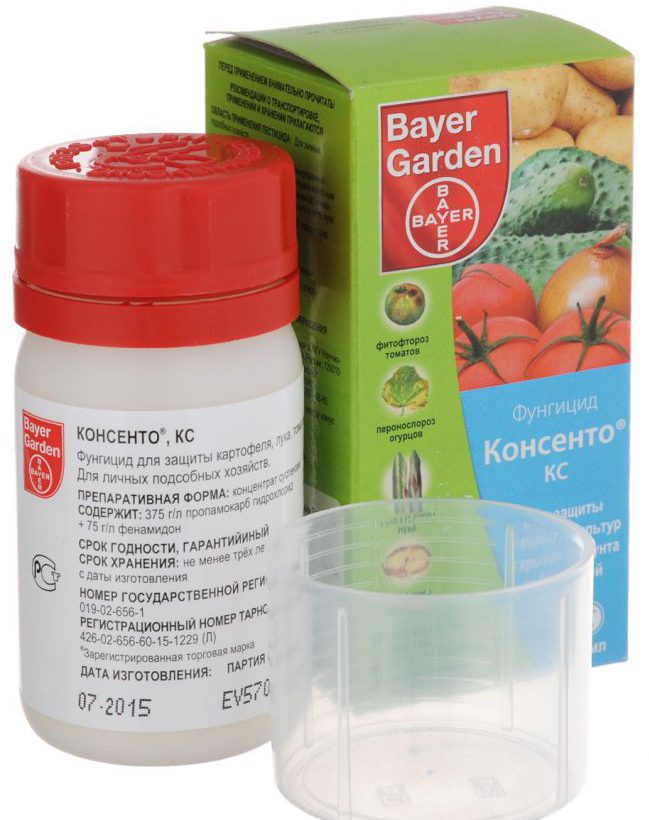
During the season,, usually, produce a series of preventive sprays. Besides, Antifungal agents are also used to prevent the destruction of grain in storage, as well as vegetables in the vegetable bases. They were created and generic drug, which can both profilaktirovat, and heal mycotic processes. Various plant vegetative phase should ideally use different types of fungicides.
What fungicidal agents will be effective for conifers? Pathogenic infections coniferous, such, rust, fuzarioz, Schutte brown (It is found in various different types of pines and firs), rust, Alternaria fir and juniper can profilaktirovat special means, suitable not only for deciduous, but also for conifers. known, that are used to good effect for conifers such drugs, as a means of copper-based, Fundazol (once per season) and strobes.
How to choose and use them
In the exercise of gardening with fungicidal drugs must carefully comply with the prescribed personal security measures. Preparation of the solution is carried out exclusively in rubber gloves. With a cotton-gauze bandage or respirator is necessary to ensure the protection of the respiratory tract. Protect the eyes with glasses. Agent is selected depending on the scale of the treated area, profilaktiruemyh species or diseased plants, toxicity force, and ground conditions. It is necessary to take into account the weather conditions. Before, how to buy the drug, consult Agrotechnics or experienced gardeners, But if you treat the plants at home, visit the florist forums.
Important! known, what many species malicious fungi can purchase resistance to applicable chemical, which means, what drugs from time to time must be change to maximize processing efficiency.
The most popular products of the fungus
- Abig Peak - refers to the type of contact means, It is effective against a variety of plant diseases, which are caused by bacterial organisms and fungi. The packing comprises a concentrate as an aqueous slurry. Its fungicidal effects is due to copper oxychloride. The preparation is used for prophylaxis and treatment of diseases of various species and cultivated plants, and growing in the wild. Toxicity of the tool against insects comparatively high. Phytotoxicity absolutely not expressed.
- Topaz - fungicidal agent system type. It is used for prophylaxis of fungal infections of various types in the horticulture plants. The effect of the use of the most pronounced in the defeat of crops rust, and mildew. The drug is packaged in a glass jar, wherein the emulsion is concentrated.
- Effective antifungal agent - penconazole.
- Preparation Sirma KS - contact type of a new generation of antifungal agent, which is characterized by maximum efficiency with respect to potato late blight, apple scab, blackspot grapes. Release it in the form of a concentrated suspension, wherein the active ingredient is fluazinam. The tool has a sufficiently low toxicity, and relative plant is not toxic at all.
- Kvadris - means, possessing broad spectrum of activity. It is composed of a substance containing azoxystrobin. Available as a suspension concentrate. Effectively respect to all known mycotic diseases of plants. They can be treated potato bushes, vinogradnuû vine, tomatoes, onions and cucumbers, and even sports lawns.
- Fitosporin M - antifungal biological type, made on the basis of Bacillus subtilis, containing its spores and living cells.
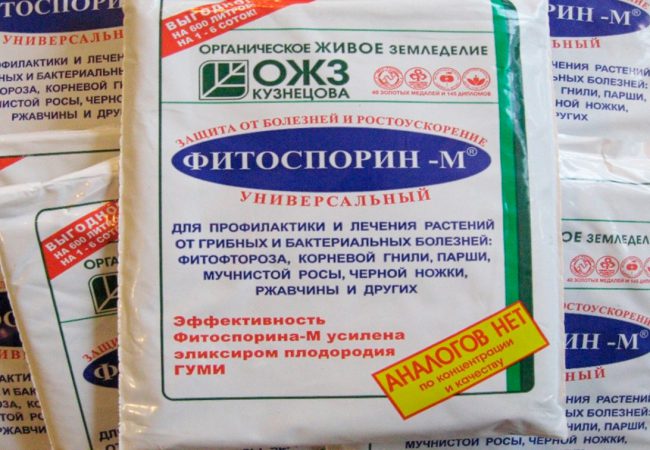
The drug is used for prophylaxis of invasive fungal courgettes and aubergines, as well as cucumbers and other, mainly vegetable, cultures. Besides, it is often used for garden and treatments, houseplants, and cultures, growing in greenhouses and greenhouses. It is effective against the vast majority of plants mycotic lesions. It can be used in conjunction with chemical pesticides, combine it with the use of fertilizers and a wide variety of growth regulators.
- Profit Gold - used as horticultural crops surface, and in the form of systemic means, penetrating into the plant tissue. It helps to win numerous species of fungus. It contains a part of 2 chemical combination, with strong antimycotic action.
- cimoxanil - is able to spread along with the juice to all tissues of the plant organism.
- famoxadone also acts as a protection for a long time in the form of a film, a long time ensuring the protection of the plant body from infection. Presented brownish granules, having peculiar smell.
- Tanos - systemic antifungal agent deep impact. The active ingredient, having a pronounced antimycotic effect - cymoxanil - immediately penetrates into plant tissue. Therefore, recovery is possible after only 1-2 days after the treatment of the sick plants listed drug. The sale comes in the form of granulated powder, soluble in water. It is used most often for the treatment of sunflower, tomatoes, onions and potatoes. It is resistant to washing.
- Trihodermin - organic fungicidal agent, the effect of which is caused by the presence in the composition of the soil fungus, - or rather, his dispute. This fungus eliminates plants and fruit from rot, Phytophthora and other ailments mnodestva. With trihoderminovogo solution profilaktiruet disease and houseplants, and preplant seed treatment is carried out. Trihodermin powder safe for all animal species, plants, insects and fish.
- Alirin B - means organic type, manufactured in the form of tablets or powder, containing soil microflora. It inhibits the growth and spread of soil pathogenic fungi. It protects the Phytophthora, root rot, sheath blight and many other diseases and infectious agents. Suitable for the restoration of the soil structure after treatments pesticide formulations - both in gardens and orchards, and potting a relatively.



